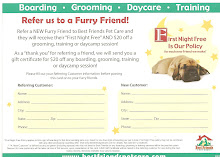Photo from Rescue Ink website
Toby and I first got hooked on this group when we watched their program on television. Recently I found their website, and thought I would share. The following exerpt is taken diretly from their home page.
Enjoy!
The Foundation
In 2010, the Rescue Ink Foundation was formed and assumed all the assets of the former non-profit organization affiliated with Rescue Ink. The mission of the foundation is to help enhance the quality of life for animals that are in need of care. It plans to further its purpose by providing specialized programs that aim to raise awareness concerning animal brutality and mistreatment. The formation of this new foundation allows the members of Rescue Ink to focus on taking action against animal abusers and neglect cases. With generous donations, we can save the lives of hundreds of abused animals, educate the youth of America on the proper care of animals, and provide essential animal care services, including veterinary and rescue care.
Who We Are
Rescue Ink is an animal-rescue group dedicated to battling animal abuse and neglect, and educating and informing children and families about the mistreatment of animals. But don't be fooled: Rescue Ink isn't your typical rescue organization. These tough-talking tattooed bikers aren't afraid to use their verbal muscle-power to take the fight against animal abuse to the next level, within the boundaries of the law. The group uses their intimidating presence to shame and report animal abusers and rehabilitate distressed animals.
Our Work
Rebel, originally named "Ribbons" because of his tattered, shredded ears, was found as a stray in Kentucky. The ligature marks on his legs and nose, as well as his severely infected, pus-filled ears, suggested he had been used as a "bait-dog" to train fighting dogs in a suspected dog-fighting ring. Rescue Ink swooped in and, with the aid of Animal Rescue Flights, flew Rebel home and offered him a new lease of life as the official Rescue Ink mascot. With his scarred face and muscle-bound body, Rebel is a shining example of an animal's ability to forgive and live in the moment. He is a daily reminder of Rescue Ink's mission. While Rescue Ink deals with serious cases like Rebel's on a daily basis, the group also assists with some, er, eclectic situations. When a group of renegade cluckers took up home in a Queens neighborhood, Rescue Ink was called in to help New York City animal control round them up. After much chasing, stalking and net-waving, the team finally caught the rogue rooster (nicknamed Junior) and some hens. Junior is now living the high life at a working farm in upstate New York, alongside Sophia, Isabella and Henrietta, his harem of hens. Most rescuers don't list chicken-chasing under their credentials. Then again, most rescue groups are nothing like Rescue Ink.
Shelter
Rescue Ink's sanctuary is located in upstate New York. The 25-acre rehabilitation center has two pack leaders who make every opportunity to rehabilitate the rescues. By fully providing for these dogs everyday, they earn their trust, their respect and ultimately, their allegiance. In return, Rescue Ink offers them balance to replace fear and dominance. Every decision made is for the benefit of the dogs and every dog that we work with resides under this blanket of safety and care. By using our presence as a figure of leadership and our sanctuary as the territory that we control, we are their main source of guidance. As a result we form the dog's tendencies, personality, and their temperament. With an unwavering image of leadership - every dog can have the opportunity to become a balanced and calm submissive member. Rescue Ink is in the process of expanding the sanctuary, and will have updated news on this project over the next several months.































